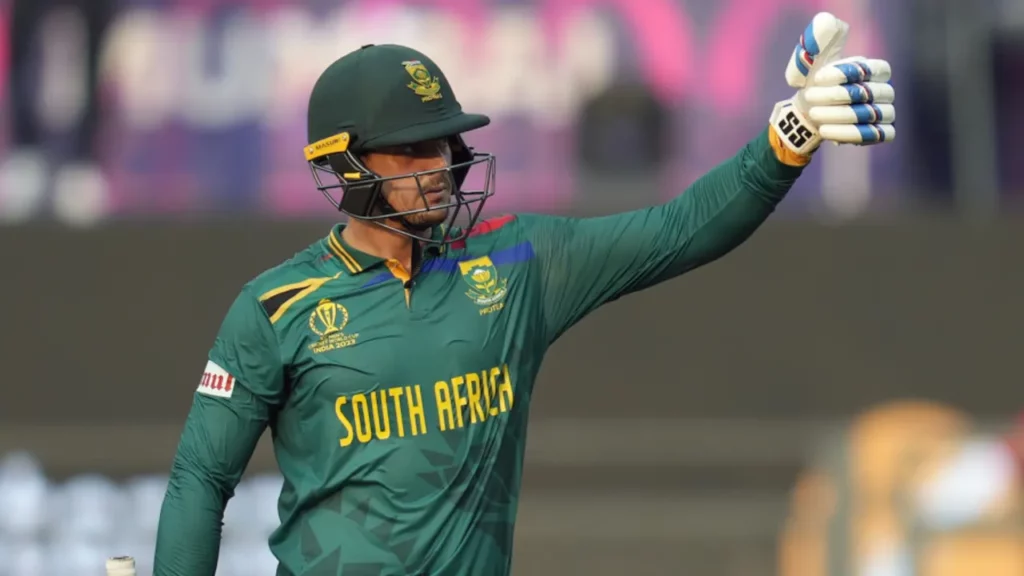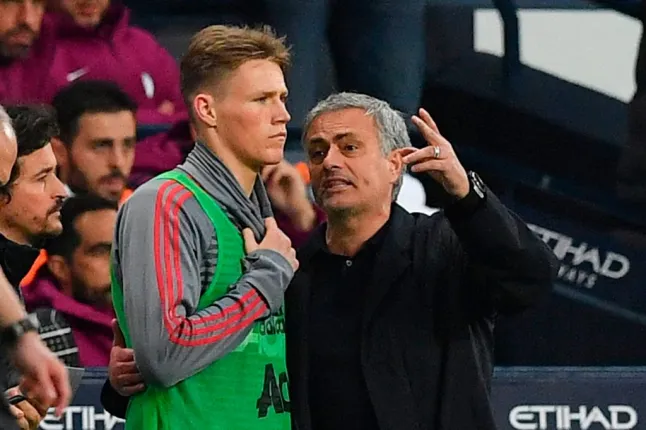
There’s a popular saying:
Too much of a good thing can be bad.
However, for the South African cricket team, there’s no such thing as “too many runs.” Their staggering victory margins at the World Cup seem like they’ve completely overwhelmed their opponents, including the formidable England team. In a time when cricket has become a buffet of match choices, South Africa has decided to feast, especially with their bats.
South Africa boasts the top three totals in this World Cup, including a massive score surpassing 400 – the highest ever in tournament history. Additionally, six of the 19 centuries scored in the tournament have been by South Africans.
The Quinton de Kock Phenomenon
Quinton de Kock, South Africa’s pride at this World Cup, leads the run-scoring charts. His impressive 174 in his 150th ODI is just shy of Gary Kirsten’s record. Word around the camp is that de Kock aspires to score a double century, especially since this World Cup is his ODI swan song. But his form isn’t just about wild slogging; it’s about calculated aggression. His approach to spin, especially against Shakib Al Hasan, has been nothing short of masterful.
Quinny has always been a free spirit, but what’s often overlooked is his sharp cricketing brain.
Commented stand-in captain Aiden Markram.
Key Figures of South Africa’s Dominance
| Performance Metrics | South Africa | Closest Competitor |
| Last 10 Over Run Rate | 12.28 | New Zealand (8.16) |
| Average 40th Over Score | 250 (3-4 wickets) | 216 (5 wickets) |
| Sixes in Last 10 Overs | 32 | India & NZ (total 10 more) |

The Winning Formula
South Africa’s lethal finishing at the end of their innings makes them a favorite at this tournament. Their ability to accelerate towards the end is evident from their scoring rates in the last 10 overs. But what facilitates this?
- Wickets in Hand: South Africa’s top-order solidity, largely thanks to de Kock, means they usually enter the death overs with ample wickets in hand, setting a perfect stage for fireworks.
- Six-Hitting Prowess: Their ability to clear the ropes, especially in the concluding overs, is unmatched. A special mention goes to Heinrich Klaasen, who seems to save his best six-hitting for the last 10 overs. Klaasen’s recent performances have cemented his position as the tournament’s second-highest six-hitter.
However, there’s a vulnerability. If South Africa’s top order falters, they might find themselves in hot water, given they rely heavily on their top six. A tiny glimpse of this was visible against England, but Marco Jansen’s rescue act provided some relief.
Is there a Blueprint?
Despite their consistency, South Africa denies following any fixed blueprint.
We focus on reading the game based on conditions rather than situations. It’s about being grounded, focusing on the pitch rather than the scoreboard.
JP Duminy, the batting coach, encapsulated the approach as “always looking for the positive opportunity.” The results are evident on the scorecards, with South Africa emerging victorious in four out of five games.
Chasing vs. Setting Targets
While South Africa’s batting might seem unstoppable when setting targets, their one loss against the Netherlands raises eyebrows regarding their chasing abilities. Would they maintain their composure during a pressure chase in a critical match?
Additionally, teams like India, having prolific run-scorers, haven’t had the chance to set targets, leaving us with unanswered questions about how other strong line-ups might fare when batting first.
In Conclusion
Though filled with hypotheticals, it’s hard to ignore South Africa’s emphatic statement in this tournament. Their performance against Bangladesh wasn’t just a display of their strength but a celebration of cricket at its finest. As the tournament progresses, fans worldwide wait with bated breath to see if the Proteas can maintain this intensity and bring home the coveted trophy.




